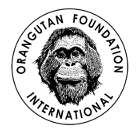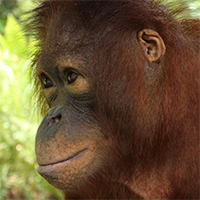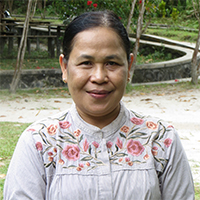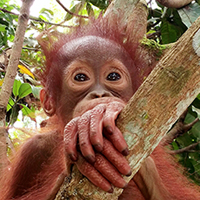There are currently over 300 orangutans at the OFI Care Center, and no two are the same. It’s never easy selecting one “Orangutan of the Month” but at certain times one individual will stand out. For her great courage and resilience, Jalin has earned the spotlight this month. Jalin arrived at Orangutan Foundation International’s (OFI)… Continue reading Orangutan of the Month for Feb, 2018: Jalin
Author: Britt ten Have
Employee Spotlight: Ibu Waliyati
On a hot Monday morning in Central Indonesian Borneo, Ibu Waliyati is busy stapling paperwork in her office at Orangutan Foundation International’s (OFI) Orangutan Care Center and Quarantine (OCCQ). “Oh, please come in and have a seat,” she says in perfectly spoken English. “It’s a hot day, isn’t it? Would you like some water? I’ll… Continue reading Employee Spotlight: Ibu Waliyati
The New Records Library of OFI
Since Dr. Biruté Mary Galdikas began research in 1971, through the establishment of Orangutan Foundation International in 1986, and to the present day, OFI has collected various data on wild orangutans, other native species, botany and logistics. This wild orangutan research program is singular in duration and continuity. The information, therefore, is incredibly valuable and… Continue reading The New Records Library of OFI
Orangutan of the Month for Jan, 2018: Ariel
On a warm morning in Central Indonesian Borneo, the caregivers of Orangutan Foundation International (OFI) prepare to escort the orangutans from Pondok Satu into the Learning Forest at the Orangutan Care Center and Quarantine (OCCQ). Pondok (which means “shelter”) Satu is currently managed by an all-female team who care for both female and male orangutans,… Continue reading Orangutan of the Month for Jan, 2018: Ariel
Orangutan of the Month for Dec, 2017: Otan
On a hot afternoon during the rainy season, a vehicle slowly pulled up in the driveway of OFI’s Orangutan Care Center and Quarantine (OCCQ) in Central Indonesian Borneo. The van was soon recognized to be a patrol vehicle of the Sampit Wildlife Department of Indonesia. An officer opened up the car to reveal two little… Continue reading Orangutan of the Month for Dec, 2017: Otan
Zooming in on ‘Forest Fragmentation’
Harmful consequences of Palm Oil plantations for Biodiversity – Zooming in on ‘Forest Fragmentation’ You might have heard that the production of palm oil is very damaging to our global environment and tropical biodiversity.[1] Acres of rainforest are cleared every hour, displacing or killing the many animals who live in them, including the critically endangered… Continue reading Zooming in on ‘Forest Fragmentation’



